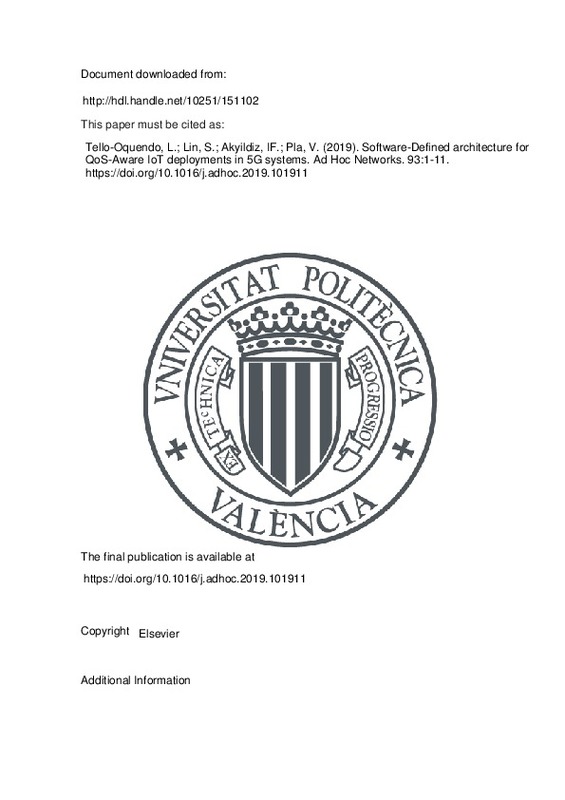JavaScript is disabled for your browser. Some features of this site may not work without it.
Buscar en RiuNet
Listar
Mi cuenta
Estadísticas
Ayuda RiuNet
Admin. UPV
Software-Defined architecture for QoS-Aware IoT deployments in 5G systems
Mostrar el registro completo del ítem
Tello-Oquendo, L.; Lin, S.; Akyildiz, IF.; Pla, V. (2019). Software-Defined architecture for QoS-Aware IoT deployments in 5G systems. Ad Hoc Networks. 93:1-11. https://doi.org/10.1016/j.adhoc.2019.101911
Por favor, use este identificador para citar o enlazar este ítem: http://hdl.handle.net/10251/151102
Ficheros en el ítem
Metadatos del ítem
| Título: | Software-Defined architecture for QoS-Aware IoT deployments in 5G systems | |
| Autor: | Lin, Shih-Chun Akyildiz, Ian F. | |
| Entidad UPV: |
|
|
| Fecha difusión: |
|
|
| Resumen: |
[EN] Internet of Things (IoT), a ubiquitous network of interconnected objects, harvests information from the environments, interacts with the physical world, and uses the existing Internet infrastructure to provide services ...[+]
|
|
| Palabras clave: |
|
|
| Derechos de uso: | Reconocimiento - No comercial - Sin obra derivada (by-nc-nd) | |
| Fuente: |
|
|
| DOI: |
|
|
| Editorial: |
|
|
| Versión del editor: | https://doi.org/10.1016/j.adhoc.2019.101911 | |
| Código del Proyecto: |
|
|
| Agradecimientos: |
This work was supported by the US National Science Foundation (NSF) under Grant No. 1547353. A part of this work was supported by the Harry C. Kelly Memorial Fund, AC21 Special Project Fund (SPF), NC State 2019-2020 ...[+]
|
|
| Tipo: |
|







![[Cerrado]](/themes/UPV/images/candado.png)


